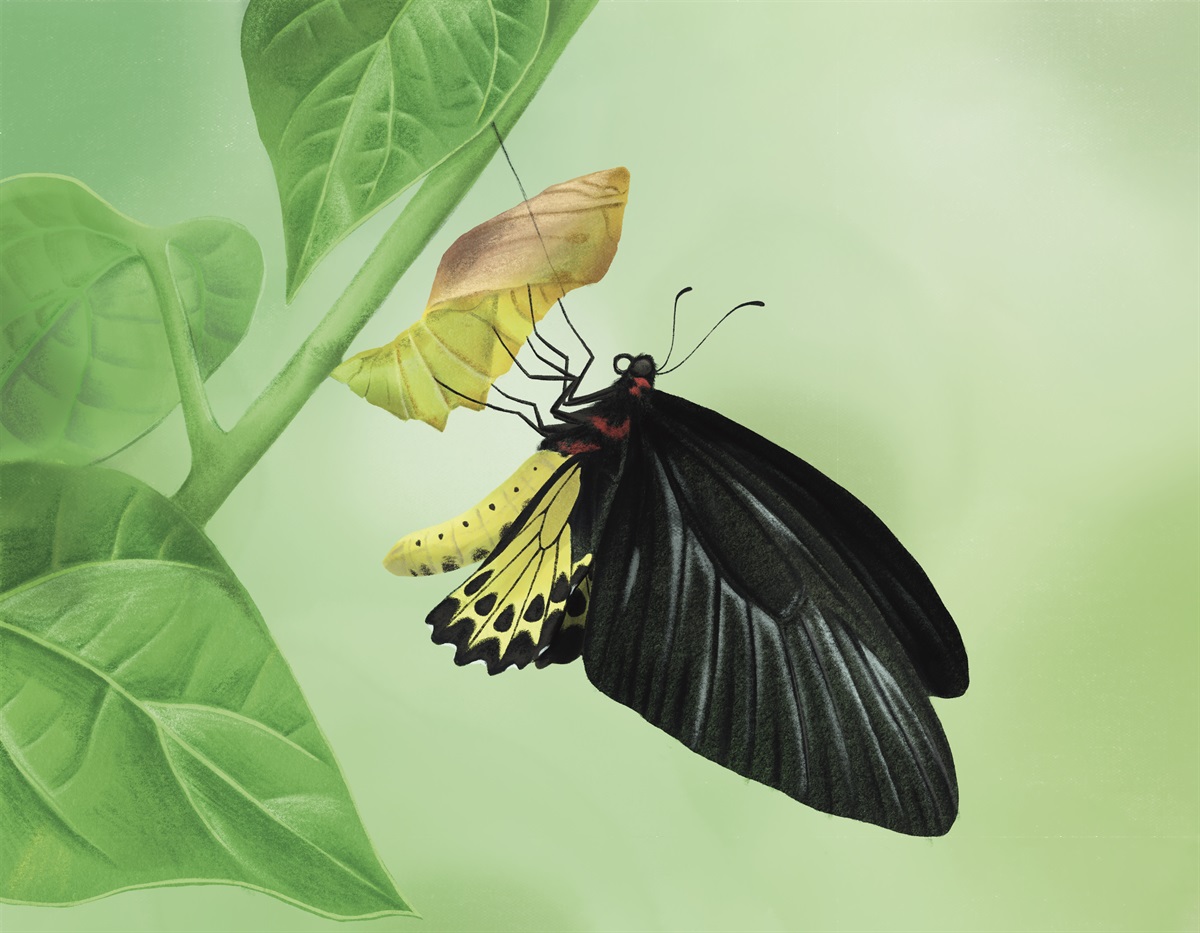Common Birdwing has a body that is tinted with red and golden colours, together with its golden black wings, making it a gorgeous dancer when in flight. It is one of the largest butterfly species in the territory. The species looks like a little bird because of its large wings. This is why its common name is called 'birdwing'.

Despite possessing eye-catching colours, the butterfly has its own tactics to stay safe from their predators. The bright colours in fact serve as warning colours, signaling predators its toxicity, which comes from its larval host plant - Indian Birthwort. Interestingly, the poisonous Indian Birthwort does not intoxicate the birdwing caterpillars. Instead, the caterpillars store the toxin in their bodies and stay poisonous even after they turn into adults. Other than the warning colours, the caterpillars are able to push out a protrusion that looks like a snake's forked tongue to mimic snakes and meanwhile emit foul odour to deter predators. In addition, their pupae are not only well-camouflaged, they can also make noises to scare away predators. The self-defence mechanisms displayed by the butterfly are simply fascinating!
The Common Birdwing share a similar look with its close relative, Golden Birdwing. Due to their gorgeous appearance, both have unfortunately fallen victim to the poachers, who capture them in vast numbers and sell them as desirable specimens to collectors. To protect them, Common Birdwing has been listed in the 'Wild Animals Protection Ordinance' (Cap. 170) as a protected animal, and both species are also protected under the 'Protection of Endangered Species of Animals and Plants Ordinance' (Cap. 586).
| Family | Papilionidae |
|---|---|
| Scientific Name | Troides helena |
| Adult Size | Wingspan ranges from 10.5–14 cm |
| Habitat | Woodlands |
| IUCN Red List Status | Least Concern |
